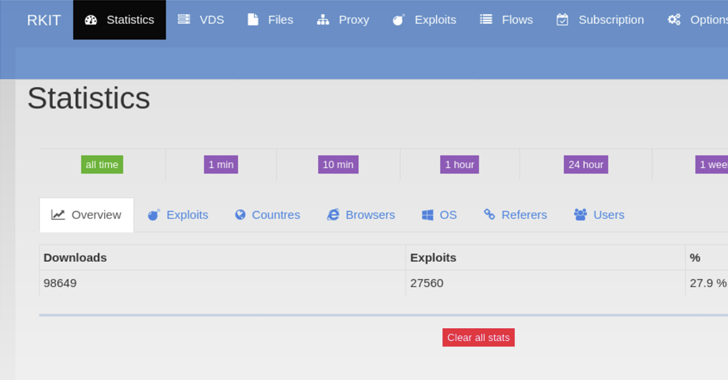New Research Sheds Light on the Complex and Evolving Operations of RIG Exploit Kit Malware: How to Protect Your Computer and Data
Recently, cybersecurity researchers have shared new insights into the operations of the RIG exploit kit malware. This malware has been used to infect computers and steal data from individuals and organizations for several years. The new findings provide a deeper understanding of how the RIG exploit kit works, how it spreads, and how it can be detected and prevented.
What is the RIG exploit kit?
The RIG exploit kit is a type of malware that is used to infect computers and steal data. It operates by exploiting vulnerabilities in web browsers and other software applications, allowing it to execute malicious code on the infected machine. Once installed, the malware can steal sensitive data, install additional malware, and carry out other malicious activities.
How does the RIG exploit kit work?
The RIG exploit kit typically operates by using a "drive-by" attack, which involves infecting a legitimate website with malicious code. When a user visits the infected website, the malware is automatically downloaded and installed on their computer. The user may not even be aware that they have been infected.
Once the malware is installed, it can begin carrying out its malicious activities. This may include stealing sensitive data such as login credentials, credit card numbers, or other personal information. It can also install additional malware on the infected machine, allowing attackers to take control of the computer or use it for other nefarious purposes.
New insights into the RIG exploit kit's operations
Recently, researchers have shared new insights into the RIG exploit kit's operations. These insights provide a more detailed understanding of how the malware works and how it can be detected and prevented.
One of the key findings is that the RIG exploit kit uses a complex system of redirection and obfuscation to evade detection. This system involves redirecting users to a series of websites, each of which contains obfuscated code that is designed to evade antivirus software and other security measures.
The RIG exploit kit also uses a variety of exploits to infect computers, including vulnerabilities in web browsers, plugins, and other software applications. These exploits are often "zero-day" vulnerabilities, which means that they are previously unknown and do not have a patch available.
In addition, the researchers found that the RIG exploit kit is constantly evolving and changing to evade detection. The malware authors regularly update the code and change the domains used in the attack, making it more difficult for security researchers to track and detect.
How can the RIG exploit kit be detected and prevented?
Despite the RIG exploit kit's sophisticated methods of evasion and infection, there are steps that individuals and organizations can take to detect and prevent the malware.
One important step is to keep software applications up-to-date with the latest security patches. Many of the exploits used by the RIG exploit kit are known vulnerabilities that can be patched with software updates. By keeping software up-to-date, users can reduce the risk of infection.
Another important step is to use antivirus and other security software to detect and block malware infections. This can include using tools that are specifically designed to detect exploit kits, such as the RIG Exploit Kit Detector.
Users should also be cautious when browsing the web and opening email attachments. They should only download files from trusted sources and be wary of suspicious emails and websites.
Conclusion
The RIG exploit kit is a sophisticated malware that is used to infect computers and steal data. New insights into its operations provide a deeper understanding of how the malware works and how it can be detected and prevented. By keeping software up-to-date, using antivirus and other security software, and being cautious when browsing the web, users can reduce their risk of infection and protect their sensitive data from theft.

Comments
Post a Comment